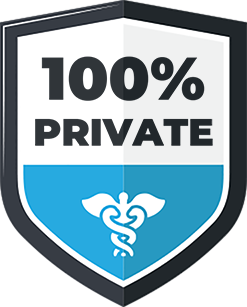Lymphocyte Subset Panel
- Secure and Confidential Results
- Over 4,500 CLIA-Certified Labs U.S. Labs
- Most Results in 1-3 Days
- 110% Price Guarantee
About Our Lymphocyte Subset Panel
This test panel is used to monitor various immunodeficiencies including HIV. Our Lymphocyte Subset Test Panel measures amounts of the following lymphocyte classes in the blood:
- Absolute Lymphocytes
- Absolute CD3
- Percentage CD3
- Absolute CD4
- Percentage CD4
- Absolute CD8
- Percentage CD8
- CD4/CD8 Ratio (calculated)
- Absolute CD16/56
- Percentage CD16/56
- Absolute CD19
- Percentage CD19
Although there are a relatively fixed number and proportion of these lymphocyte subsets in normal individuals, the absolute number and proportion are altered in various diseases. For example, in individuals with human immunodeficiency virus (HIV) infection, the number of CD4+ cells and the proportion of CD4+ cells relative to CD8+ cells vary based on the stage of disease and therapeutic response. Thus, lymphocyte subset analysis can provide information regarding the immune status of the patient and assist in monitoring therapy. Lymphocyte subset analysis can also identify isolated T, B or NK cell deficiency; and help classify severe combined immunodeficiency disease (SCID), which in turn helps predict infection risk and evaluate recurrent infections.
The immune system is mediated by distinct lymphocyte classes or subsets including T-cells, B-cells, and natural killer (NK) cells:
- T-cells are involved in combating intracellular infections and foreign tissue.
- B-cells give rise to the humoral immune system that is targeted against bacterial and viral infections.
- Natural Killer cells or NK cells play a role in defense against viral infections and tumors.
These lymphocyte subsets can be discerned by the antigenic properties of cell surface markers:
- T-cells are CD3 positive. T-cells are further classified as helper cells (CD4 positive, CD4+) or cytotoxic cells (CD8 positive, CD8+). In turn, CD4+ and CD8+ cells can be classified as naïve (CD4RA+, CD8RA+) or memory cells (CD4RO+, CD8RO+).
- B-cells are CD19 positive.
- NK cells are CD3 negative and CD16 and CD56 positive.
HIV MONITORING:
In patients with HIV, the CD4+ T-cell level and the CD4+/CD8+ ratio typically decline shortly after seroconversion. CD4+ levels above 500 cells/mm3 are usually associated with asymptomatic infection, whereas levels <200 cells/ mm3 are consistent with a transition to AIDS. CD4+ levels rise in response to effective anti-retroviral therapy. Aside from a history of AIDS-defining illness or severe HIV-related symptoms, the CD4+ cell count is generally the most important factor in determining when to initiate therapy. Therapy should be considered for patients with a CD4+ cell count ≤350 cells/mm3.
Identifying deficiency in T, B or NK cells allows classification of SCID and other immunodeficiencies into one of the following types: T+B+NK+, T+B+NK-, T+B-NK+, T-B+NK+, T+B-NK-, T-B+NK-, T-B-NK+, and T-B-NK-. Such classification facilitates appropriate genetic counseling and clinical management.













